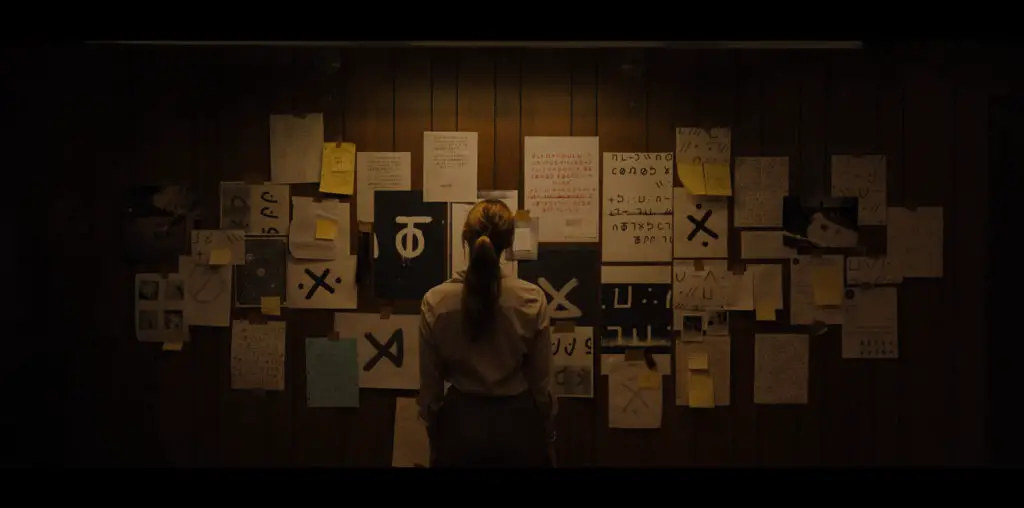
It is hard to escape the conclusion that Mollner has a serious hard-on for Blue Velvet. Among the very first things you see are blue skies, red roses, and a ruined ear. The setting, among the woodlands of Oregon, may as well have been Lynch’s Lumberton to my untrained eye.
The material is pretty strong stuff, featuring a fair amount of blood throughout. That it is splashed around so casually adjacent to a strand about dating puts one on edge, with the threat that these two streams will merge completely and be too horrible to digest. Mollner balances this tension very well, but it can all feel a bit queasy. There are also parts where the logic seems to collapse, and you don’t buy the behavior of the people on screen, but it’s momentary.
Strange Darling is mostly a two-hander between Gallner and Fitzgerald. However, there is wonderful support across the board, even if the other characters never appear for more than a few minutes. Gallner is a star. The camera loves him. Fitzgerald is also terrific, as she effectively navigates some extremely challenging scenes with an absolute authority that is a joy to watch. The merciless attention from the virtuoso direction and it’s punishingly long takes would decimate lesser performers, but the two leads soar.

“Gallner is a star. The camera loves him. Fitzgerald is also terrific…”
Speaking of actors, Ribisi proves to be a brilliant director of photography. The variety of film stocks used looks so rich that the image resembles Technicolor at times, so much so that I thought digital color grading may have been used in post-production. But that would kind of undermine the very aesthetics described in that opening title, so presumably everything on screen is unaltered.
Strange Darling is quite the trip. Gallner and Fitzgerald excel and help audiences buy into everything that happens. The tension is ever-present and amps up nicely. Mollner’s eye for detail and pacing, when coupled with Ribisi’s cinematography, create a visually hypnotic thriller.

"…a visually hypnotic thriller."


